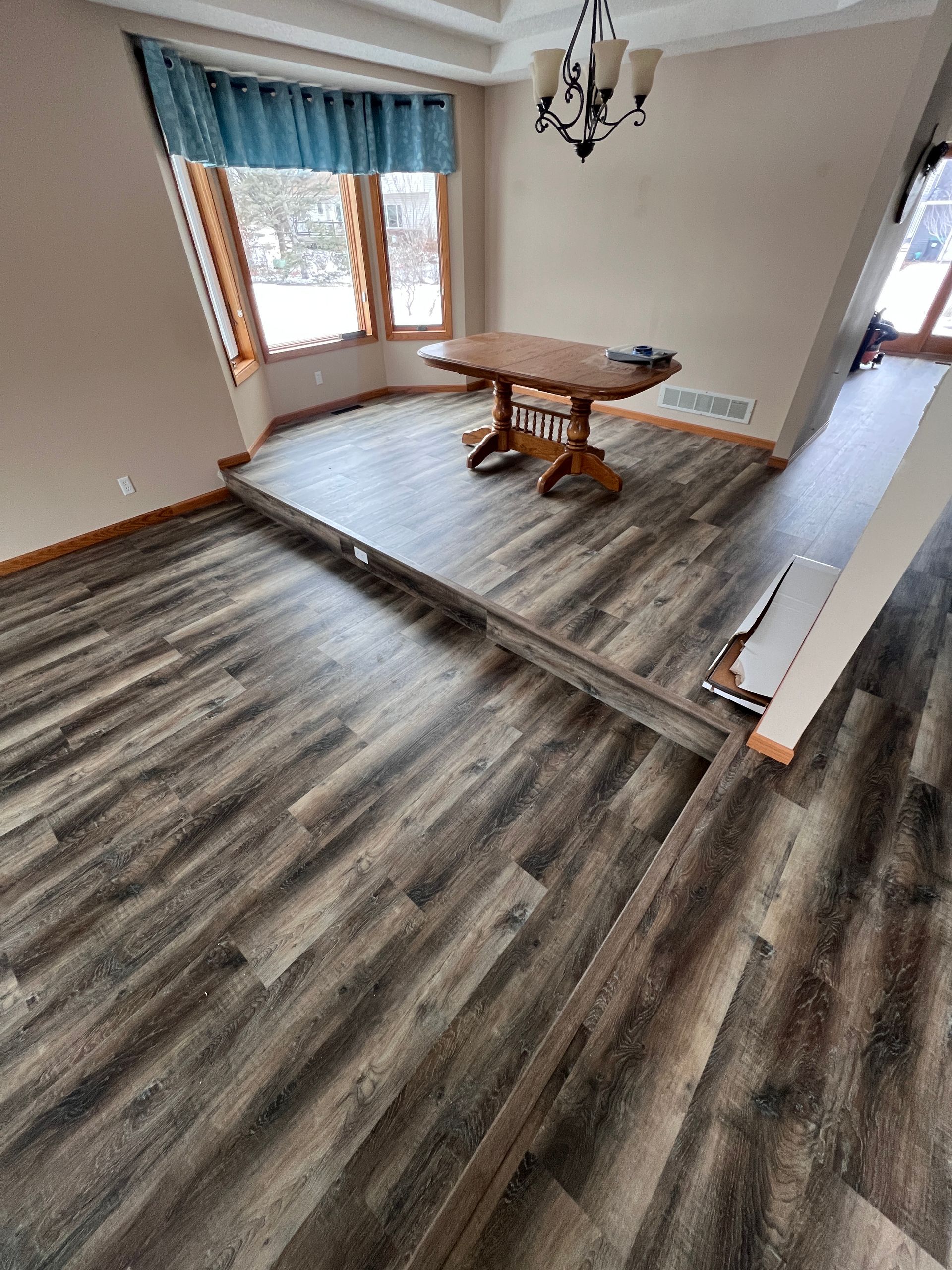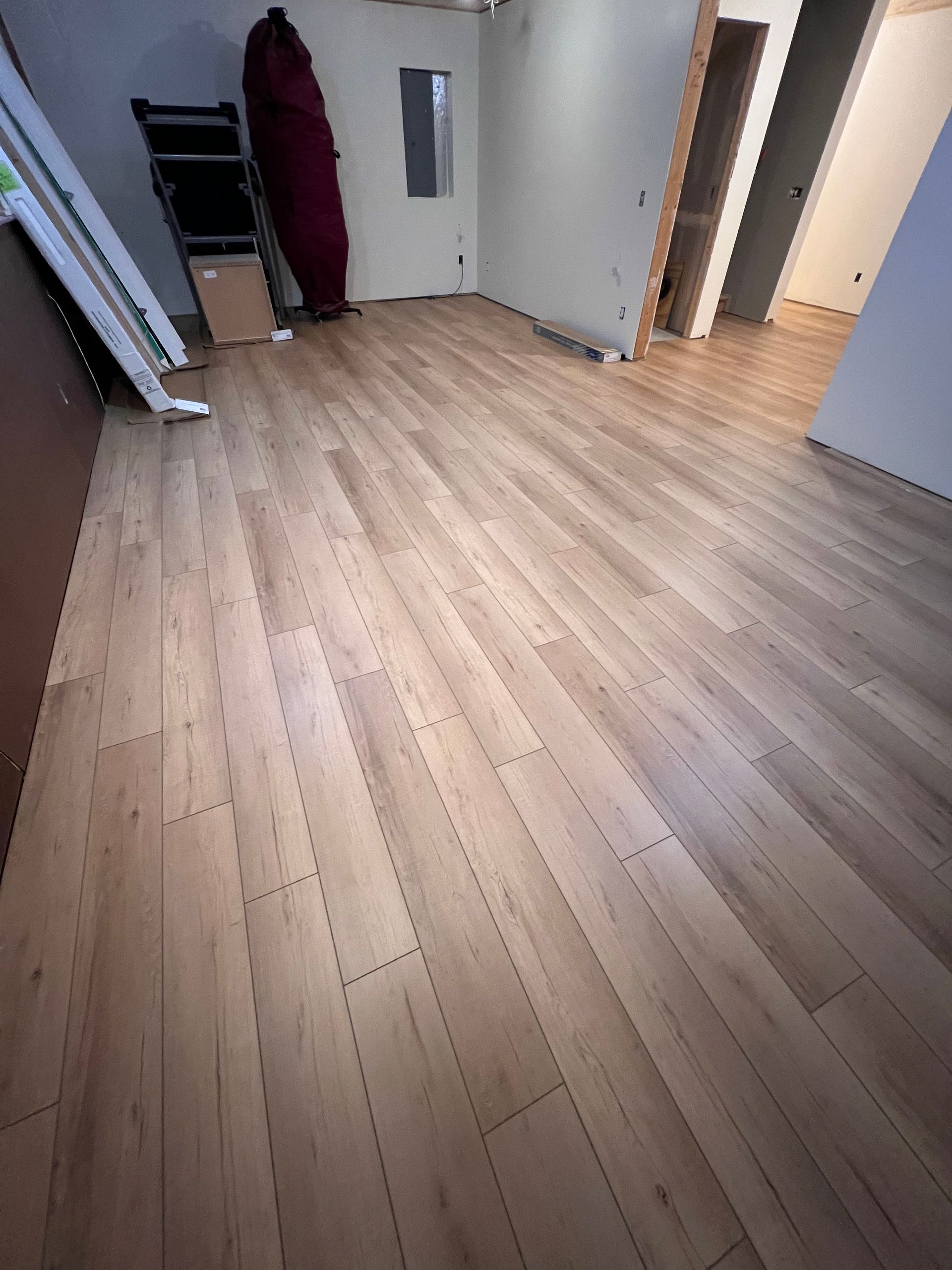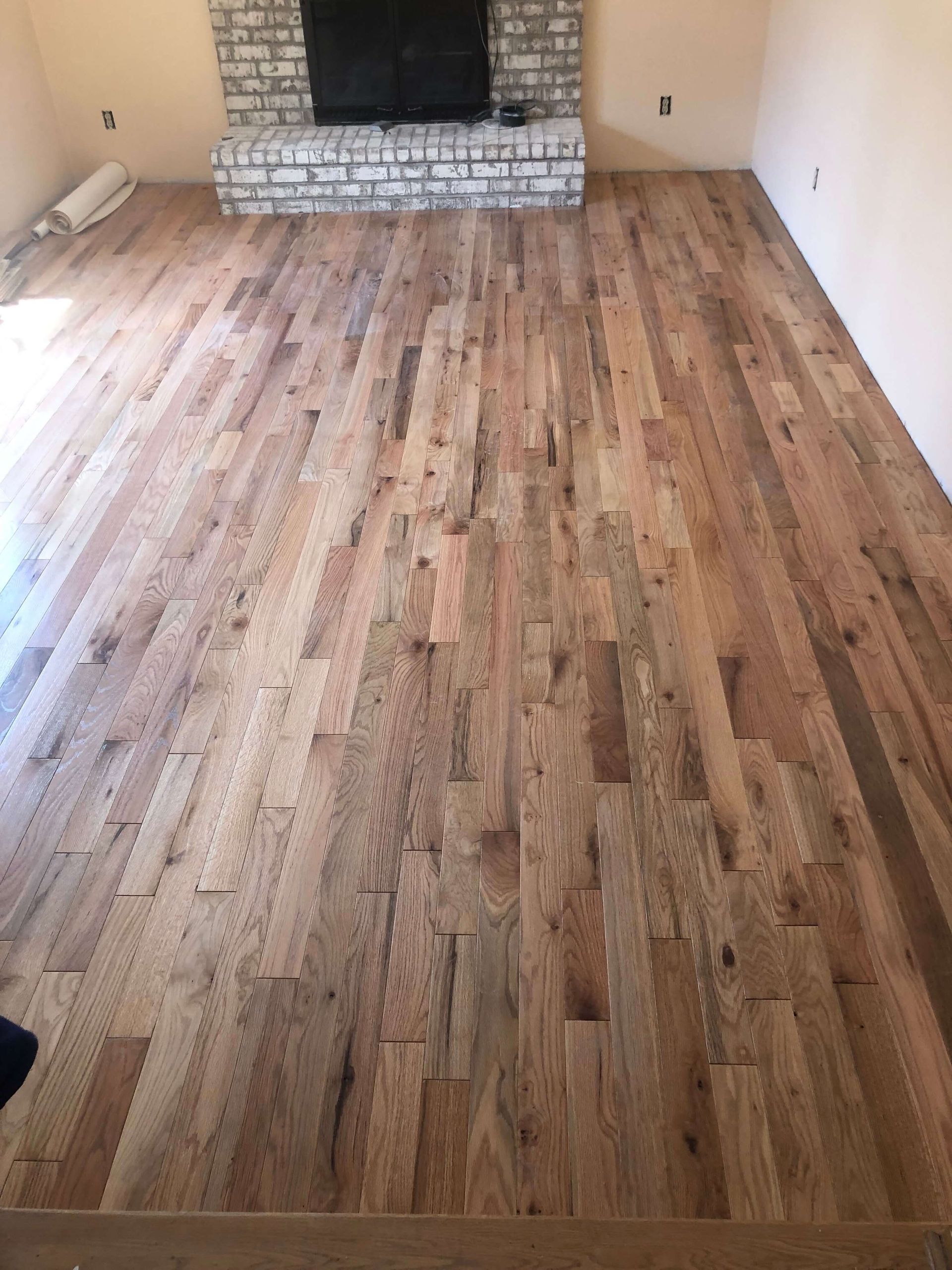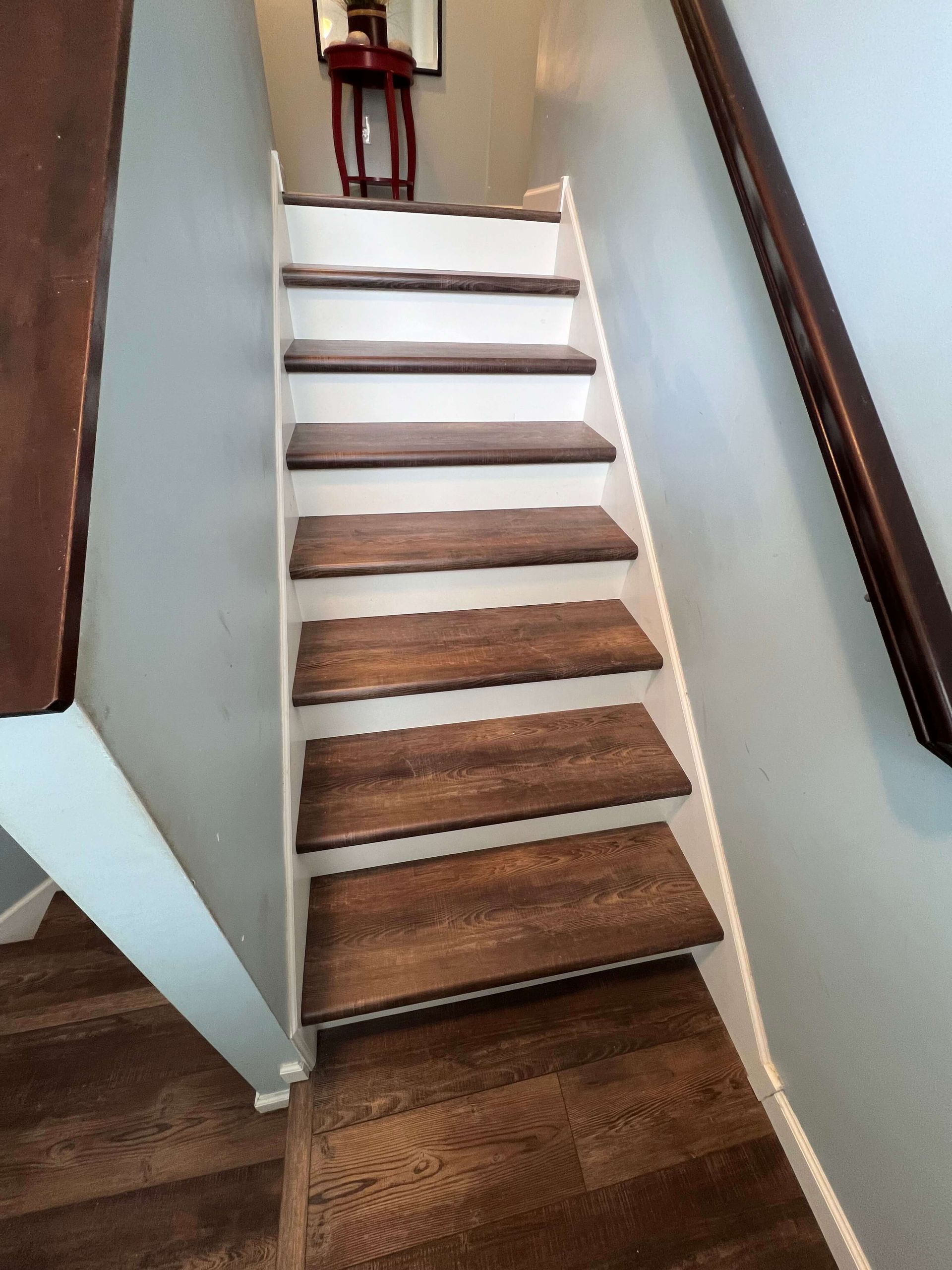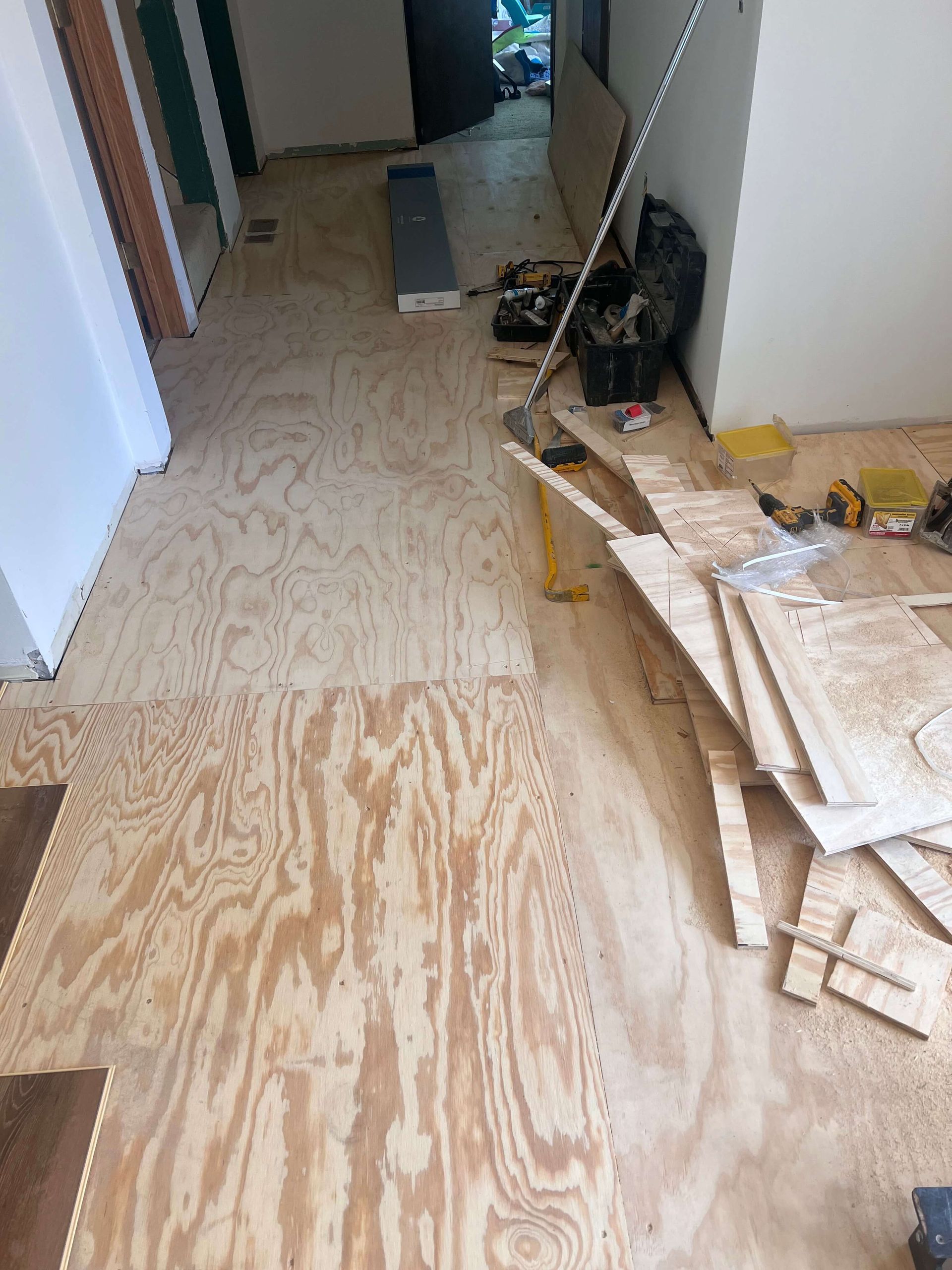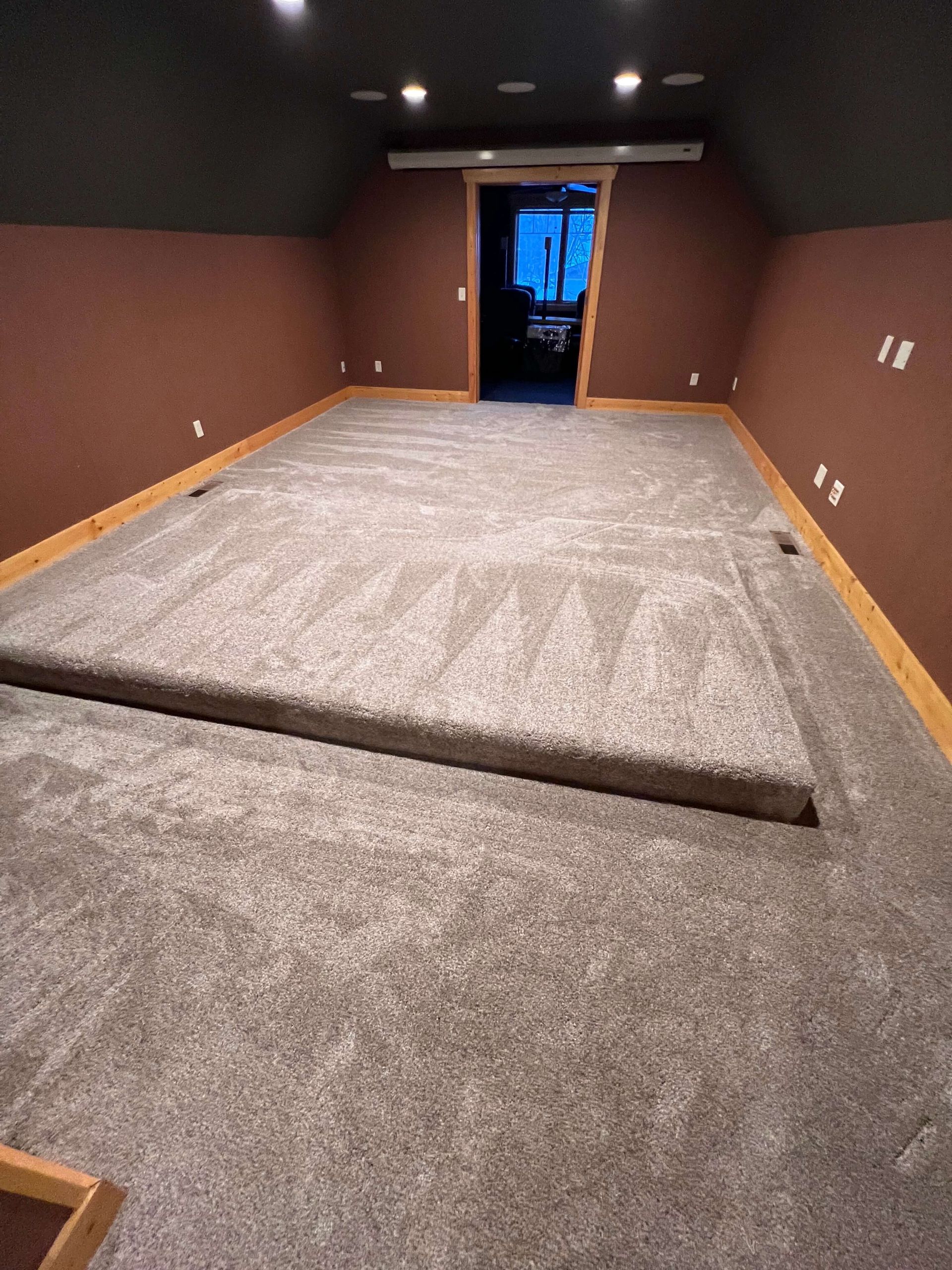Laminate is an excellent option for homeowners wanting the look of hardwood without the high cost. Modern laminates are durable, stylish, and resistant to stains and fading.
Luxury Vinyl Plank (LVP): The #1 Choice for Minnesota Homes
LVP continues to be the most popular flooring material thanks to its durability, waterproof construction, and affordability.
Hardwood Flooring: Classic Beauty That Adds Value
Hardwood remains the top premium flooring choice in Minnesota homes. Engineered hardwood is especially popular because it handles humidity cycles better than solid hardwood.
Stairs are one of the biggest visual upgrades you can make. Cap-A-Tread solutions allow homeowners to match their stairs perfectly to their LVP or laminate flooring.
Your flooring is only as good as the surface beneath it. We repair dips, squeaks, uneven spots, and damaged sections to ensure a flawless installation.
Minnesota winters make carpet an excellent choice, especially for lower levels and bedrooms. It provides warmth, comfort, and noise reduction.
